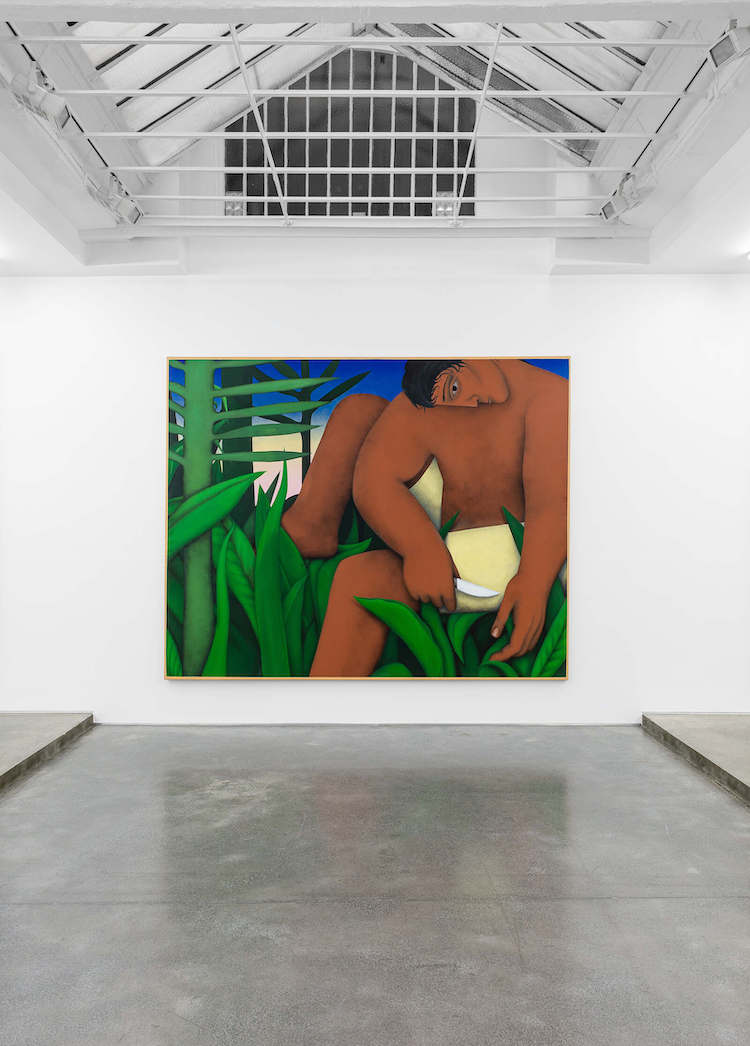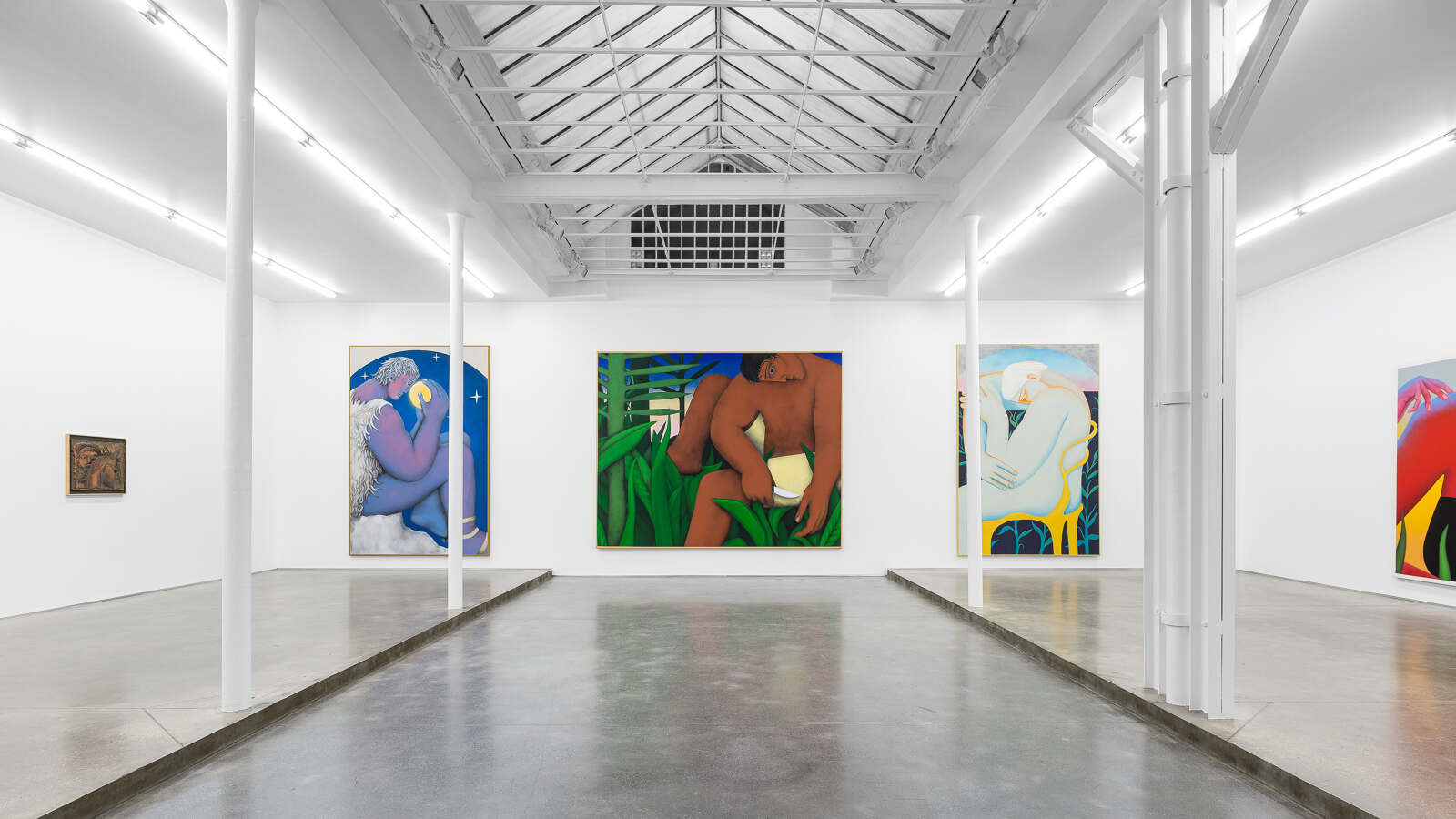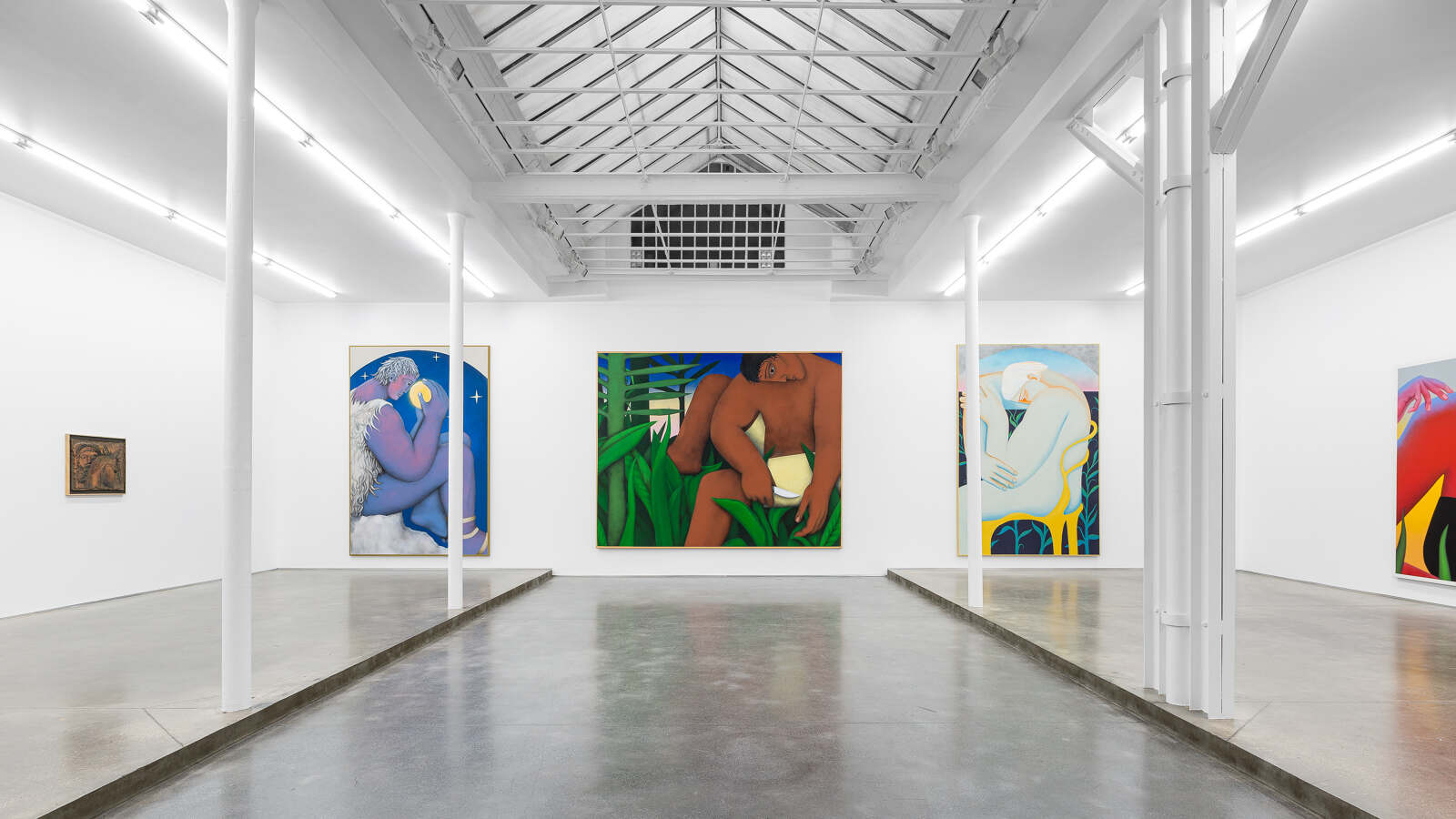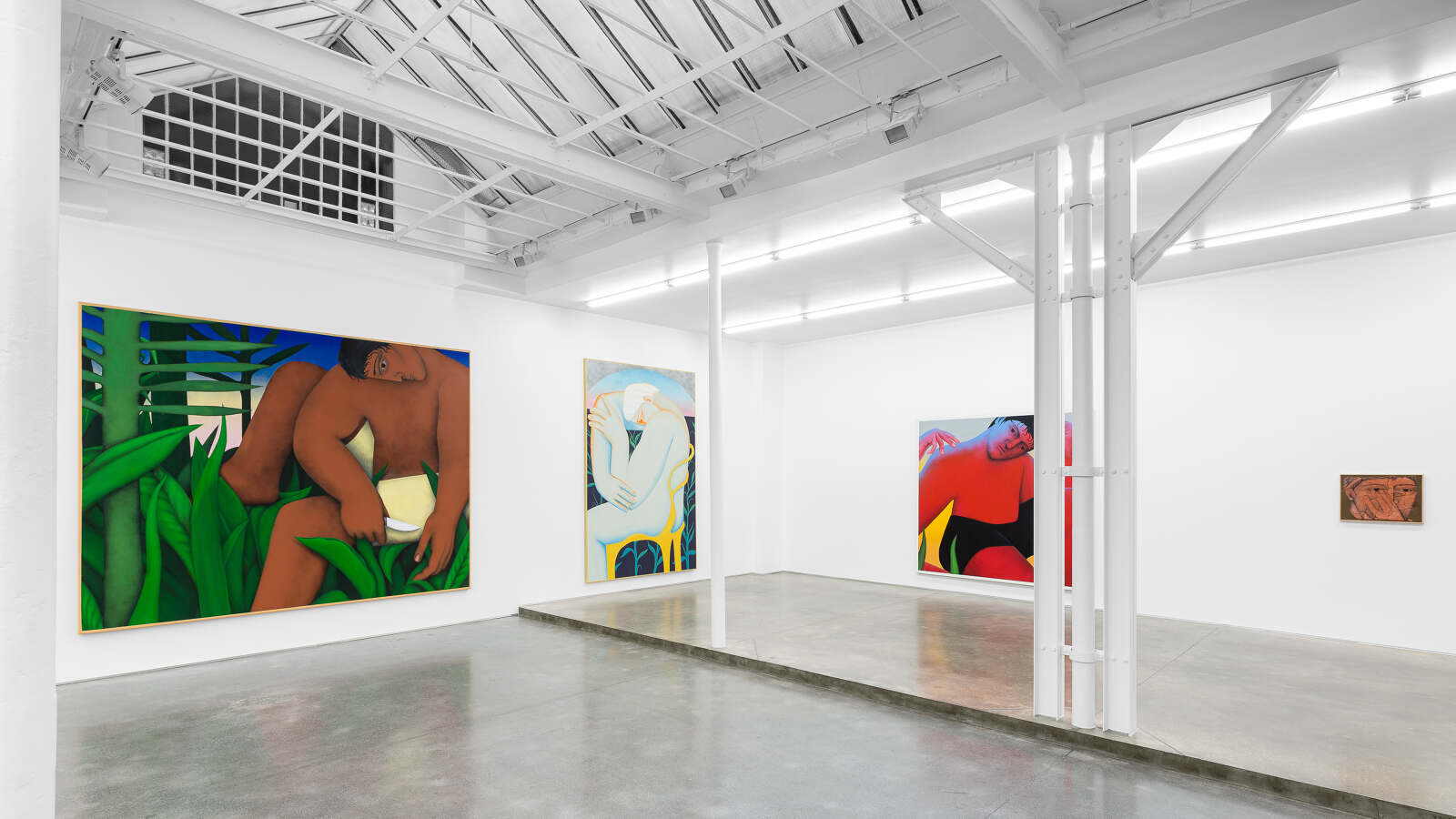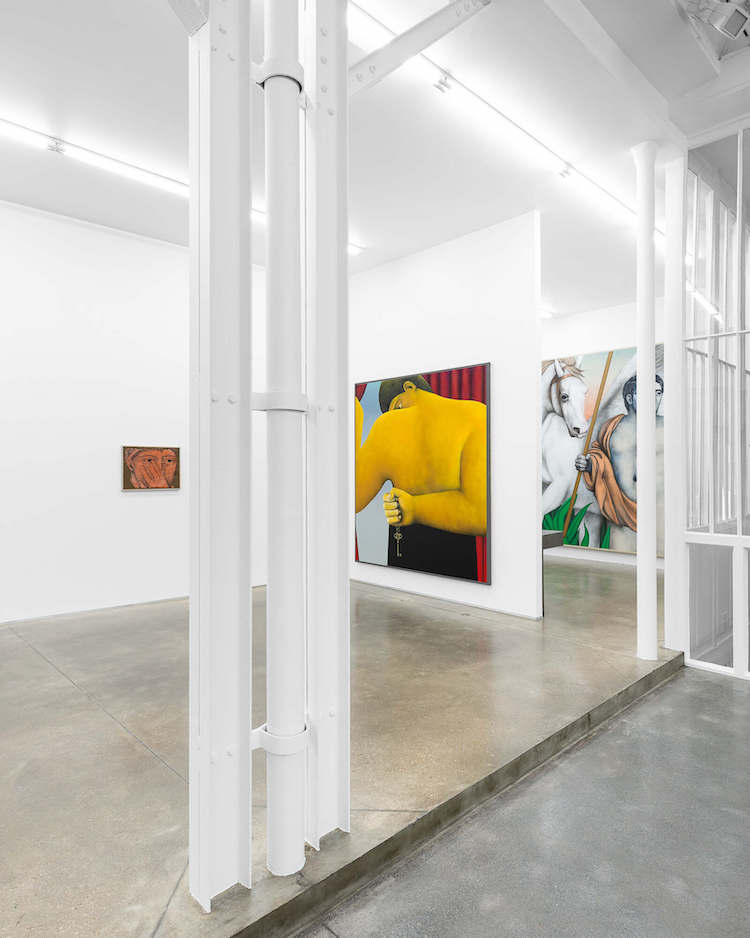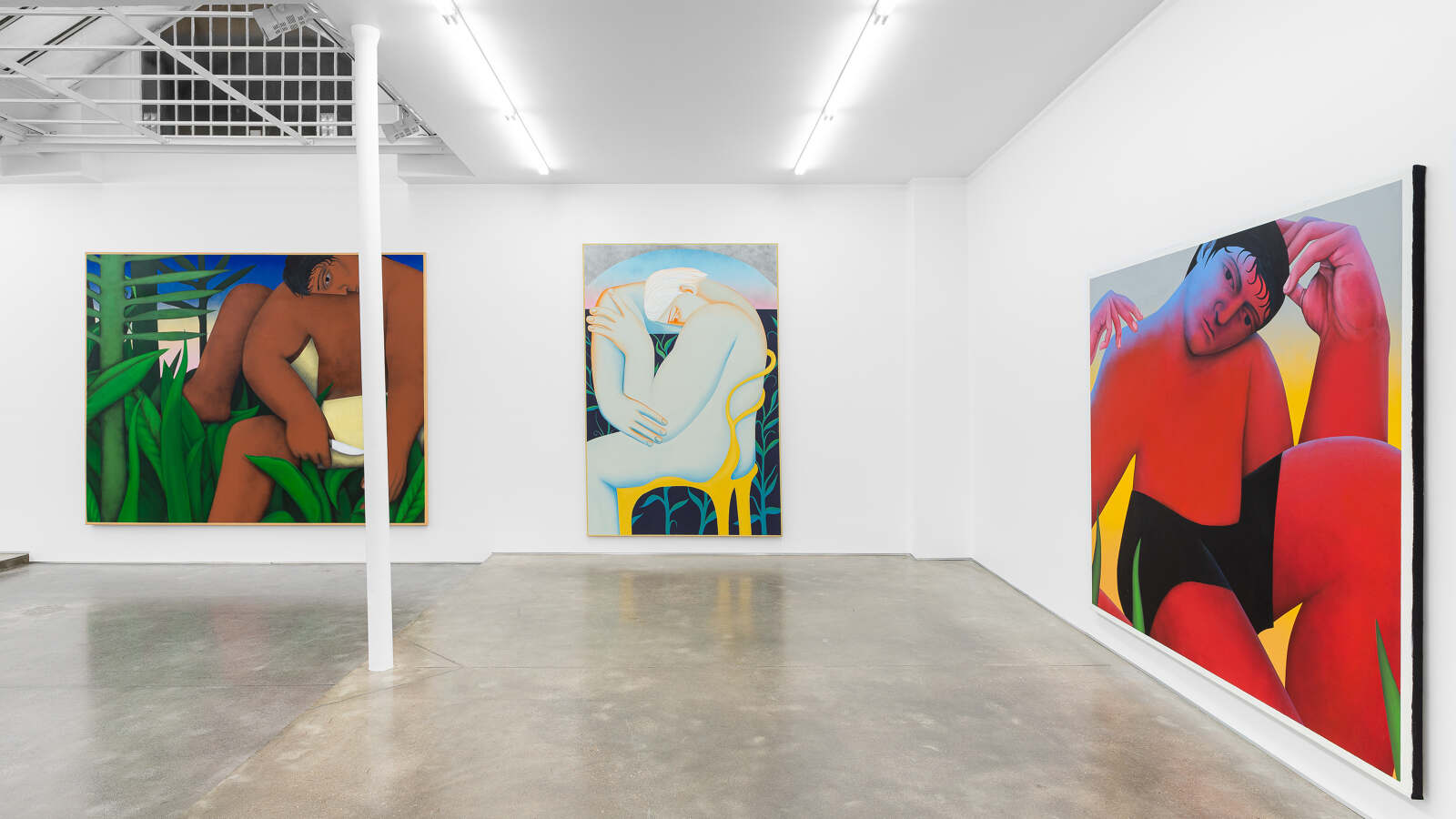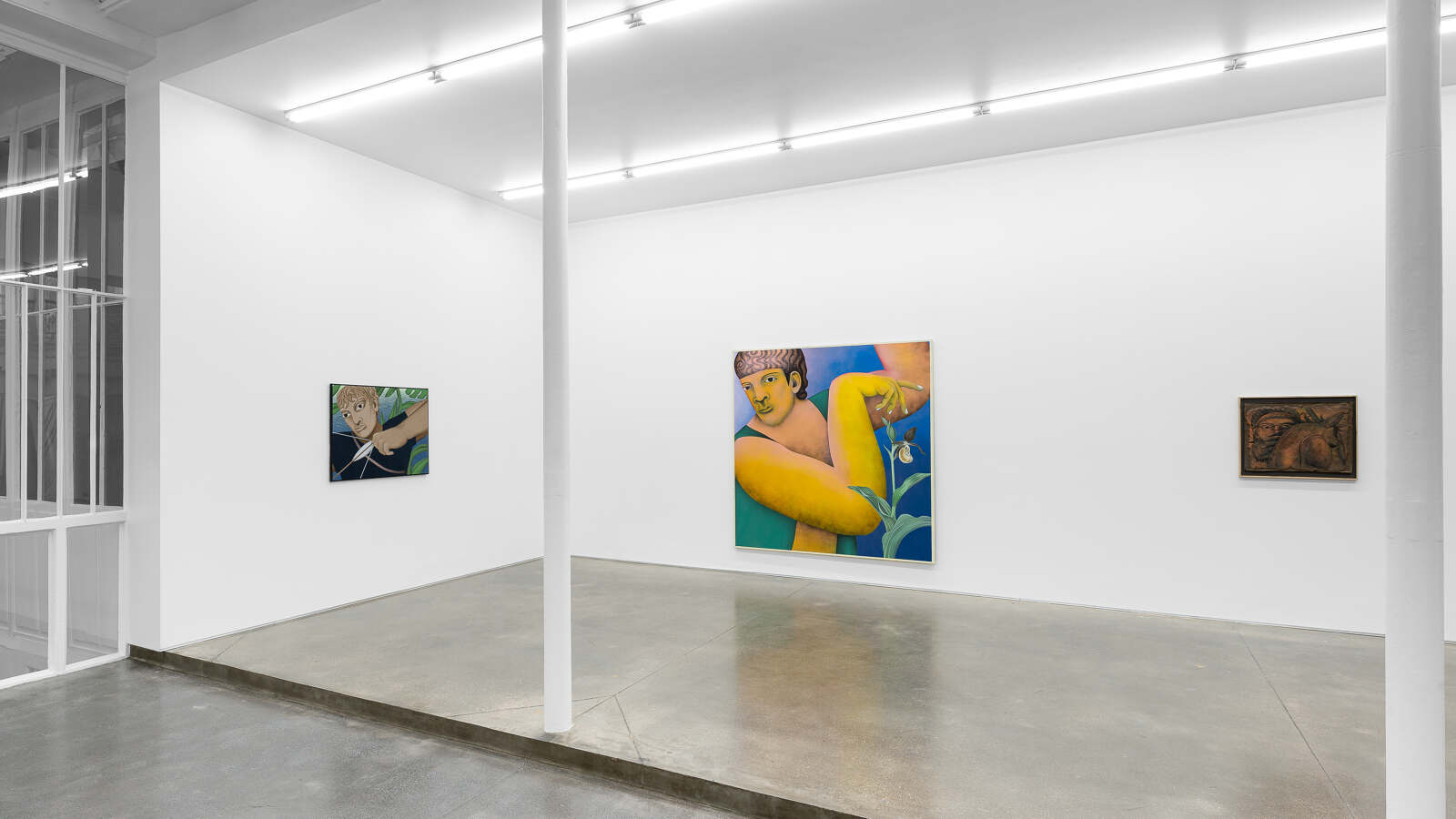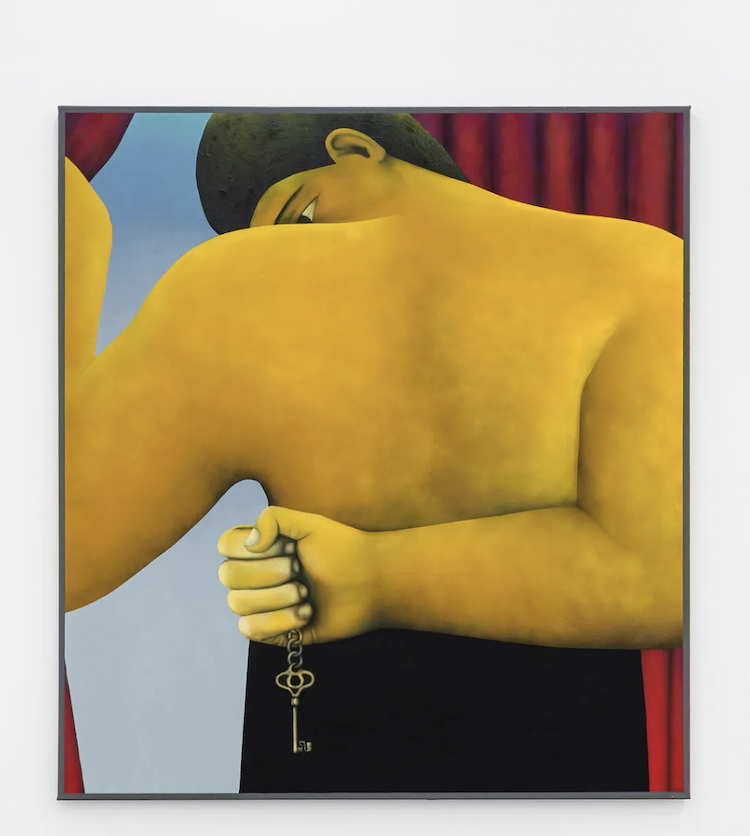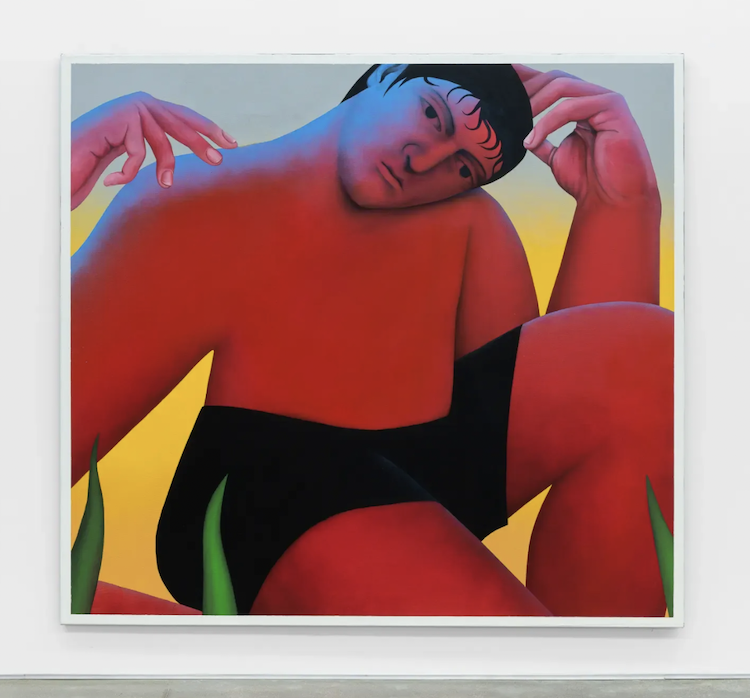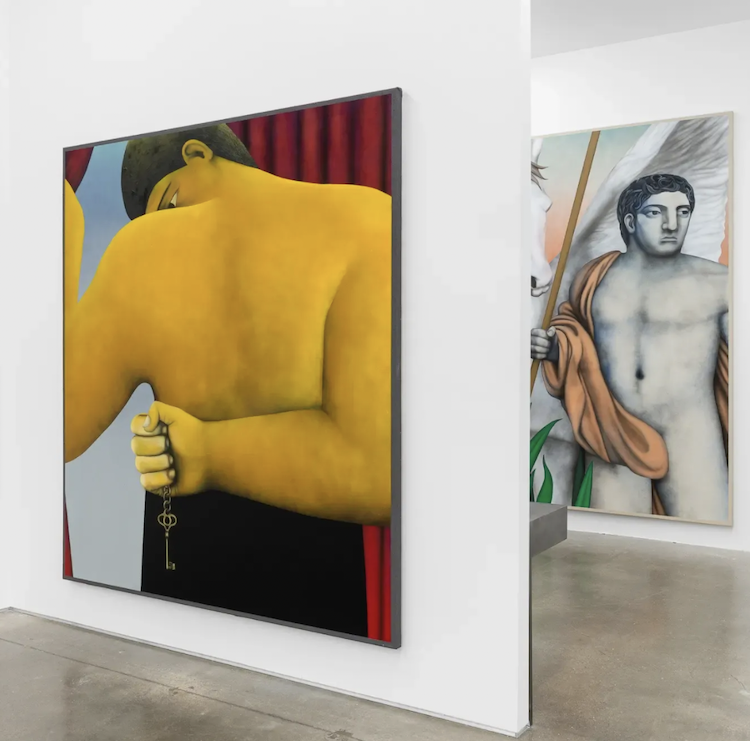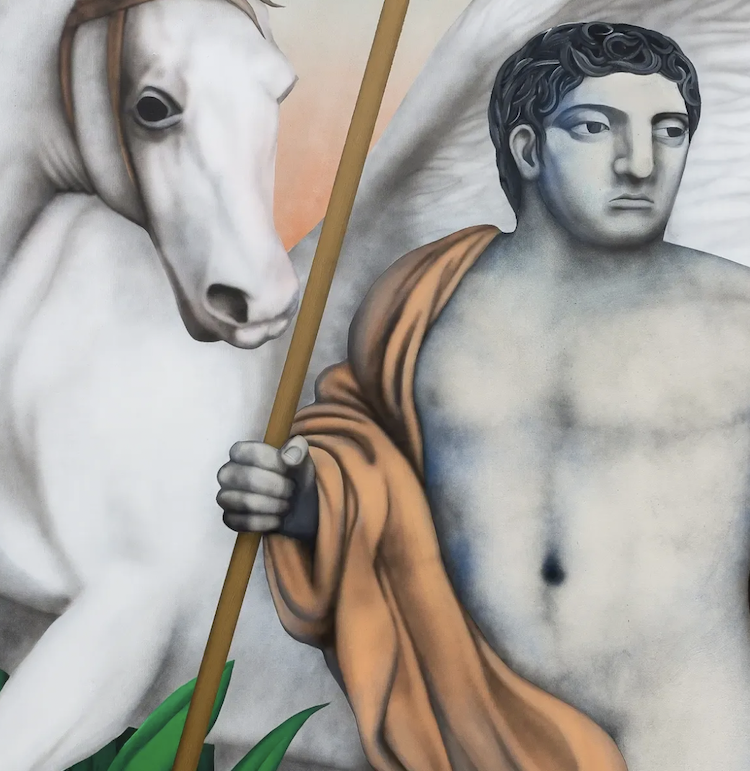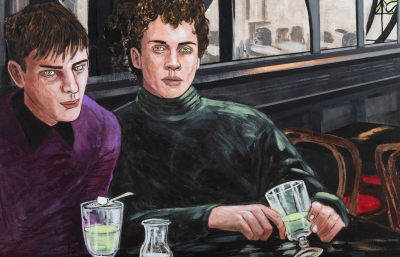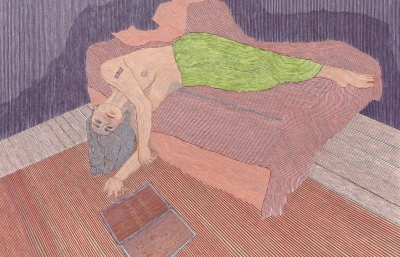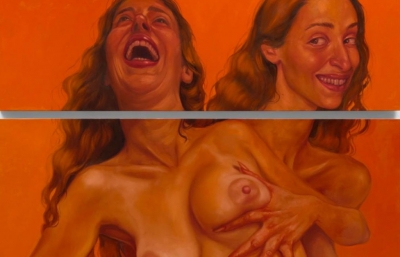When I first read the press release to Vojtech Kovarik's new solo show Destinies of Stone Faces on view at Galerie Derouillon in Paris, I was struck by a comment from the gallery, of which the artist's work was influenced by "multiple legacies of a generation born after the fall of the USSR with independence and openness to a globalized Western culture." You can't help but feel the weight of those words now, as the old conflicts in Eastern Europe have arisen again and a blending of traditions and legacies are in the forefront. Vojtech's work looks historic because it is so, but there is a contemporary story being told as well.
Vojtech's work harkens the spirit of French painter Fernand Léger, who himself painted with bold, muscular colors and cubist influence. But the Czech artist has more mythology in him than anything, turing our most famed Classical Age iconography and storytelling into something that is relatable to the modern man. His works seem to suggest that no matter what era, man and woman have a continued thread of what our humanity could be. Perhaps you could view this as a limitation of language? Why do we go back to these tales over and over again? Why do these centuries old myths seem to evoke a constant reminder of ourselves? To me what Vojtech is painting is a depiction of the expansiveness of our tales, that language is more about surviving than limitation. That his works could have been in a gallery in ancient times but seem so right in the moment is testament to this study. —Evan Pricco



